compound light microscope parts and functions worksheet pdf
Summary
Get your free compound light microscope parts and functions worksheet PDF! Perfect for students and educators. Download now and learn the essential components and their roles in detail.

The compound light microscope is a fundamental tool in microscopy‚ offering magnification through its optical system․ Widely used in education and research‚ it enables detailed observations of microscopic specimens․ This guide provides a comprehensive overview of its parts‚ functions‚ and operational principles‚ supported by labeled diagrams and interactive exercises for enhanced learning․
1․1 Overview of the Compound Light Microscope
A compound light microscope is an optical instrument that uses two sets of lenses to magnify specimens․ It consists of mechanical and optical parts‚ including the eyepiece‚ objective lenses‚ stage‚ and light source․ Designed for educational and research purposes‚ it enhances visibility of microscopic structures․ The microscope’s functionality relies on refracting light through lenses to produce enlarged images․ This tool is essential for studying cells‚ tissues‚ and microorganisms‚ making it a cornerstone in biology‚ medicine‚ and scientific exploration․ Proper understanding of its components ensures effective use and accurate observations․
1․2 Importance of Understanding Microscope Parts and Functions
Understanding the parts and functions of a compound light microscope is crucial for effective use and maintenance․ Each component plays a specific role in achieving clear magnification and focus․ Without proper knowledge‚ users may inadvertently damage the instrument or fail to obtain accurate observations․ Familiarity with parts like the eyepiece‚ objective lenses‚ stage‚ and light source ensures optimal performance․ This knowledge also enhances troubleshooting skills‚ allowing users to resolve issues efficiently․ Overall‚ comprehension of microscope components is essential for maximizing its utility in educational and scientific settings‚ ensuring precise and reliable results․
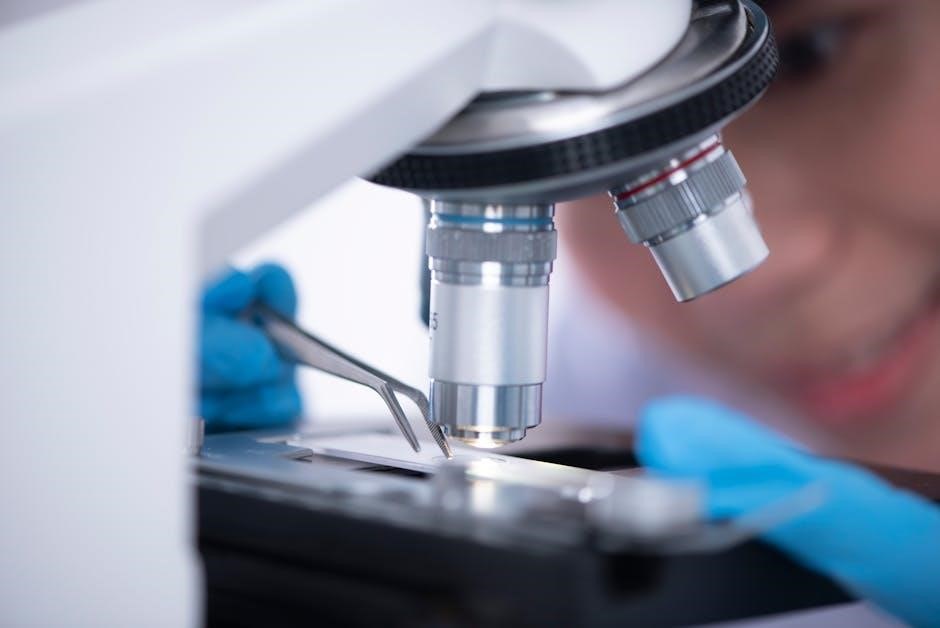
Main Parts of the Compound Light Microscope
The compound light microscope consists of key components essential for its operation․ These include the eyepiece‚ objective lenses‚ stage‚ stage clips‚ coarse adjustment knob‚ fine adjustment knob‚ light source‚ diaphragm‚ arm‚ and base․
2․1 Eyepiece (Ocular Lens)
The eyepiece‚ or ocular lens‚ is a crucial part of the compound light microscope․ Positioned at the top‚ it contains a magnifying lens that enhances the image produced by the objective lens․ Typically‚ eyepieces have a power of 10X‚ contributing to the overall magnification when combined with the objective lenses․ They are designed for comfortable viewing and play a key role in focusing the image for the user․ Proper adjustment and alignment of the eyepiece are essential for clear observation and to prevent eye strain during extended use․
2․2 Objective Lenses
Objective lenses are a critical component of the compound light microscope‚ mounted on a rotating nosepiece․ They collect light from the specimen and form an image just above the stage․ Available in various magnifications (e․g․‚ 4X‚ 10X‚ 40X‚ 100X)‚ these lenses determine the initial level of magnification․ The selected objective lens works in combination with the eyepiece to achieve the total magnification power․ Higher magnification objectives‚ like the 100X oil immersion lens‚ require a drop of immersion oil to enhance resolution and light transmission for clearer observations․
2․3 Stage
The stage is a flat platform on the compound microscope that holds the specimen in place for observation․ It typically features stage clips to securely fasten the slide‚ ensuring the specimen remains stationary․ Some microscopes include a mechanical stage with knobs for precise movement‚ allowing easy navigation across the specimen․ The stage is essential for maintaining the specimen’s position under the objective lens‚ enabling accurate focus and clear visualization․ Proper alignment of the stage with the light source and objective lenses is crucial for optimal microscopy results․
2․4 Stage Clips
Stage clips are metal or plastic clamps located on the stage of the compound microscope․ Their primary function is to hold the microscope slide securely in place‚ ensuring the specimen remains stable during observation․ By gently pressing down on the clips‚ the slide is firmly gripped‚ preventing any movement that could disrupt focus․ Stage clips are essential for maintaining the specimen’s position under the objective lens‚ allowing for clear and precise visualization․ They are a simple yet critical component in the proper functioning of the microscope․
2․5 Coarse Adjustment Knob
The coarse adjustment knob is a critical component of the compound microscope‚ used to focus the specimen under observation․ Located on the side of the microscope‚ it moves the stage up or down to bring the sample into approximate focus․ This knob is primarily used at lower magnifications to quickly adjust the distance between the objective lens and the specimen․ It is essential for initial focusing before fine-tuning with the fine adjustment knob‚ ensuring the specimen is centered and visible in the field of view․ Proper use of the coarse adjustment knob is vital for clear observation․
2․6 Fine Adjustment Knob
The fine adjustment knob is a precision control used to make minute adjustments to the microscope’s focus․ Located near the coarse adjustment knob‚ it allows for subtle movements of the stage or objective lens to achieve a sharp‚ clear image․ Unlike the coarse adjustment‚ the fine adjustment is used for final focusing after the specimen is roughly centered․ It ensures that the specimen remains in sharp focus‚ especially at higher magnifications․ Proper use of the fine adjustment knob is essential for maintaining image clarity without over-adjusting or shifting the sample․
2․7 Light Source
The light source is a critical component of the compound microscope‚ providing illumination for observing specimens․ Typically located at the base‚ it emits light through the diaphragm and stage to the objective lenses․ Modern microscopes often use built-in LED or halogen lamps‚ while older models may rely on external light via a mirror․ The intensity of the light can be adjusted using the diaphragm․ Proper illumination is essential for achieving clear‚ high-contrast images‚ making the light source indispensable for effective microscopy․
2․8 Diaphragm
The diaphragm is a crucial part of the compound microscope‚ located beneath the stage․ Its primary function is to regulate the amount of light that reaches the specimen․ By adjusting the diaphragm‚ users can control light intensity‚ enhancing image clarity and contrast․ It typically features multiple aperture sizes‚ allowing for precise light modulation․ Proper use of the diaphragm ensures optimal illumination‚ which is essential for clear observation and accurate specimen analysis․ This component plays a key role in achieving high-quality microscopy results․
2․9 Arm
The arm of the compound light microscope serves as a structural component‚ connecting the eyepiece and objective lenses to the base․ It provides stability and support‚ ensuring proper alignment of the optical parts․ The arm is designed to be durable‚ allowing users to handle the microscope securely․ While it does not directly participate in magnification or focus‚ it plays a vital role in maintaining the integrity and functionality of the instrument․ Proper handling of the arm is essential to avoid damaging the microscope․ It is a key feature to identify in microscope diagrams and worksheets․
2․10 Base
The base of the compound light microscope is the sturdy‚ lower portion that provides stability and support for the entire instrument․ It houses the light source and the diaphragm‚ which are essential for illuminating specimens․ The base ensures the microscope remains balanced and prevents movement during use․ While it does not directly contribute to magnification‚ it is a critical structural component that supports the optical and mechanical parts․ Understanding its role is important for proper microscope handling and maintenance‚ as outlined in educational worksheets and guides․
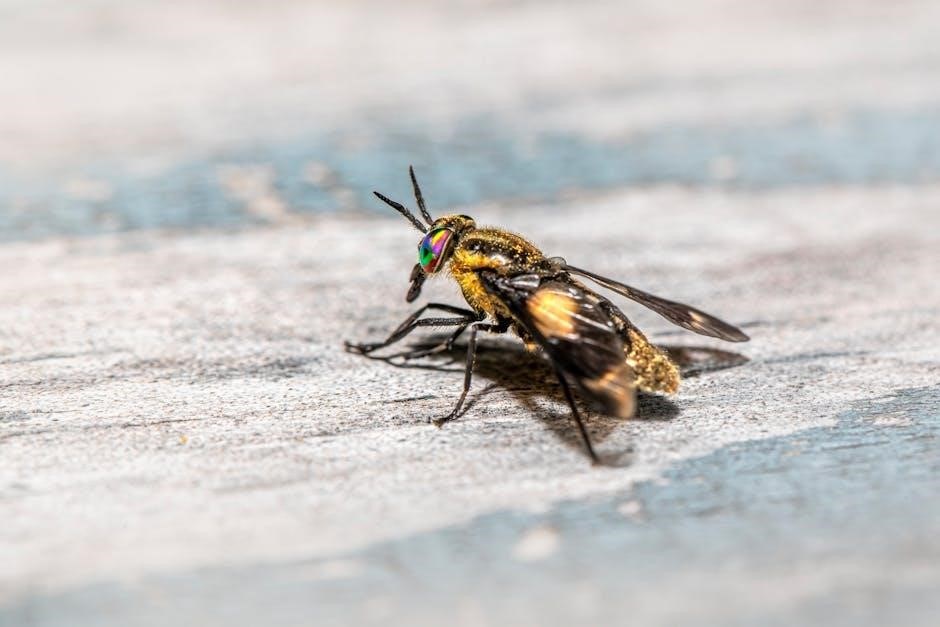
Functions of the Compound Light Microscope Parts
Each part of the compound light microscope serves a specific role‚ contributing to its overall functionality and effectiveness in magnifying specimens for detailed observation and study․
3․1 Role of the Eyepiece in Magnification
The eyepiece‚ or ocular lens‚ plays a crucial role in the magnification process of a compound light microscope․ It contains a lens that further enlarges the image produced by the objective lens‚ typically offering a magnification power of 10X․ When combined with the objective lens‚ the total magnification is calculated by multiplying the powers of both lenses․ The eyepiece is designed to focus the light rays coming from the objective‚ creating a clear and enlarged virtual image for the viewer․ Its primary function is to enhance the visibility and detail of the specimen‚ making it an essential component of the microscope’s optical system․
3․2 How Objective Lenses Work
Objective lenses are critical components of a compound light microscope‚ responsible for the initial magnification of the specimen․ They are positioned near the sample and gather light to form an image just inside the eyepiece․ Available in different magnifications (e․g․‚ 4X‚ 10X‚ 40X‚ 100X)‚ they are selected based on the desired level of detail․ The objective lens focuses the light‚ producing a real‚ inverted‚ and magnified image of the specimen․ This intermediate image is then further enlarged by the eyepiece‚ completing the magnification process․ Proper alignment and focus of the objective lens are essential for clear observation․
3․3 Purpose of the Stage and Stage Clips
The stage serves as a platform to hold and position the specimen slide under the objective lens․ It is typically movable‚ allowing precise alignment of the specimen for observation․ Stage clips are attached to the stage and securely hold the slide in place‚ preventing movement during observation․ This ensures the specimen remains stationary‚ enabling clear and focused imaging under the microscope․ The stage and clips are essential mechanical components that facilitate accurate specimen positioning and stabilization‚ which are critical for effective microscopy․
3․4 Adjusting Focus with Coarse and Fine Knobs
The coarse adjustment knob moves the stage up or down to bring the specimen into rough focus․ It is used initially to quickly locate and approximate the focal plane․ The fine adjustment knob makes precise‚ minute adjustments to achieve sharp‚ clear focus․ Together‚ these knobs enable accurate focusing‚ ensuring the specimen is viewed in optimal clarity․ Proper use involves starting with the coarse knob to approximate focus‚ then refining with the fine knob for final adjustment․ This dual system ensures precise control over the microscope’s focus․
3․5 Importance of the Light Source and Diaphragm
The light source illuminates the specimen‚ ensuring visibility under magnification․ It is typically a built-in bulb or external light․ The diaphragm regulates the amount of light entering the microscope‚ adjusting brightness and contrast․ Proper use of these components enhances image clarity and prevents overexposure․ The light source provides the necessary illumination‚ while the diaphragm fine-tunes light intensity‚ optimizing the viewing experience․ Together‚ they are crucial for achieving clear‚ detailed observations in compound light microscopy‚ making them essential for effective specimen analysis․
3․6 Structural Support Provided by the Arm and Base
The arm and base of the compound light microscope provide essential structural support․ The base is the foundation‚ stabilizing the instrument to prevent movement during use․ The arm connects the base to the microscope body‚ adding durability and rigidity․ Together‚ they ensure the microscope remains steady‚ allowing for precise focus and clear observations․ Their robust design protects internal components and maintains alignment‚ ensuring optimal performance and longevity of the microscope․

Compound Light Microscope Worksheet
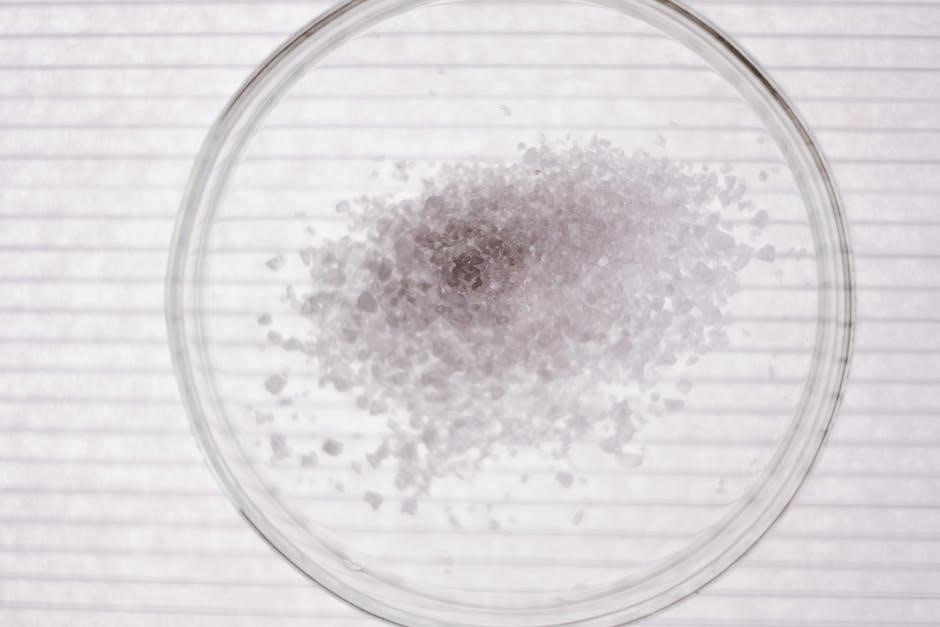
This worksheet helps students master the microscope’s parts and functions through interactive exercises‚ including labeling diagrams‚ matching terms‚ and answering questions to reinforce learning․
4․1 Identifying Parts of the Microscope
This section of the worksheet focuses on recognizing the key components of the compound light microscope․ Students are provided with labeled diagrams and images‚ allowing them to identify parts such as the eyepiece‚ objective lenses‚ stage‚ stage clips‚ coarse and fine adjustment knobs‚ light source‚ diaphragm‚ arm‚ and base․ The exercise includes matching activities where students link parts to their corresponding letters or descriptions‚ fostering a clear understanding of the microscope’s structure and preparing them for further study of its functions․
4․2 Matching Parts to Their Functions
This interactive exercise requires students to associate microscope components with their specific roles․ Using a word bank‚ learners match parts like the eyepiece‚ objective lenses‚ and diaphragm to their functions‚ such as magnifying specimens or regulating light․ The activity enhances understanding of how each part contributes to the microscope’s operation‚ reinforcing the practical application of theoretical knowledge․ It also includes multiple-choice questions to assess comprehension‚ ensuring students can accurately describe the role of each component in achieving clear and precise magnification․
4․3 Labeling the Microscope Diagram
Labeling the microscope diagram is an essential learning activity that helps students recognize and identify each part of the compound light microscope․ By using a provided word bank and diagrams‚ learners match terms like eyepiece‚ objective lenses‚ stage‚ and diaphragm to their corresponding locations․ This exercise reinforces spatial awareness and understanding of the microscope’s structure․ The worksheet often includes numbered diagrams and labels‚ making it easier for students to correlate each part with its function․ This activity is crucial for developing proficiency in using the microscope effectively․
4․4 Multiple-Choice Questions
Multiple-choice questions in the worksheet assess students’ understanding of microscope parts and functions․ These questions test knowledge on identifying components like the eyepiece‚ objective lenses‚ and stage‚ as well as their roles․ Students select the correct answer from options‚ reinforcing retention of key concepts․ This format helps evaluate comprehension quickly and objectively‚ making it an effective tool for learning and assessment․ The questions often cover magnification‚ focusing techniques‚ and proper microscope handling․
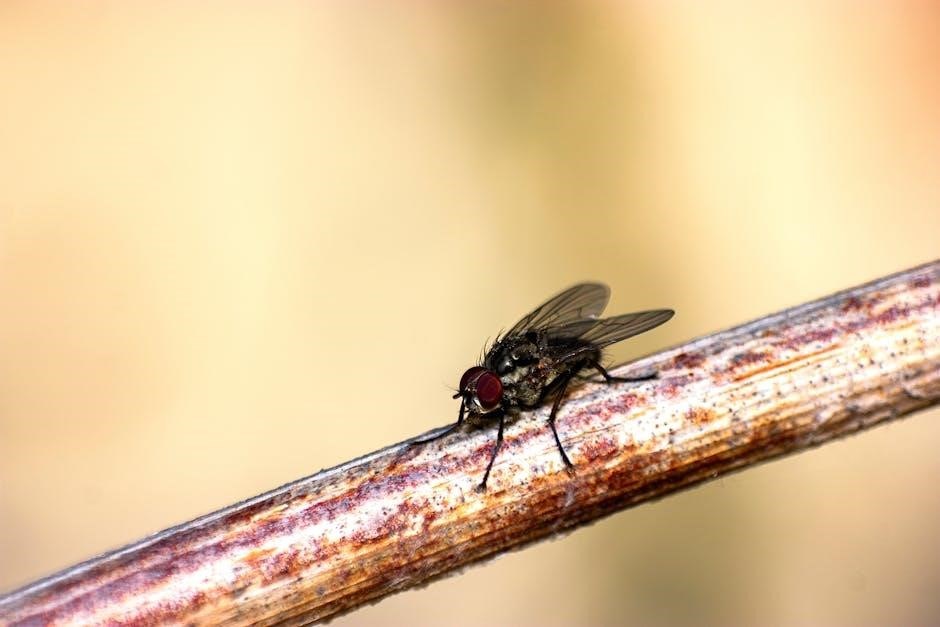
Additional Features and Considerations
Additional features include illumination adjustment‚ contrast enhancement‚ and proper handling techniques․ These considerations optimize microscopy results and extend the instrument’s lifespan‚ ensuring accurate observations and durability․
5․1 Illumination and Contrast Adjustment
Proper illumination and contrast adjustment are crucial for clear observations․ The light source provides illumination‚ while the diaphragm regulates light intensity․ Adjusting the diaphragm improves contrast‚ enhancing specimen visibility․ Ensuring optimal brightness prevents eye strain and maintains image clarity․ For specimens with varying opacity‚ fine-tuning illumination levels is essential․ Use the coarse adjustment knob to focus before refining brightness․ Avoid over-adjustment‚ as it may distort the image․ These adjustments ensure optimal viewing conditions for accurate microscopic analysis and detailed observations․
5․2 Focus and Magnification Techniques
Focusing and magnification are critical for clear observations․ Start with low magnification to locate the specimen‚ then switch to higher power for details․ Use the coarse adjustment knob to roughly focus the image and the fine adjustment knob for precision․ Ensure the specimen is centered under the light․ Properly adjusting the eyepiece and objective lenses maximizes magnification potential․ Always maintain proper lighting to avoid blurry images․ These techniques enhance clarity and ensure accurate observations‚ making them essential skills for effective microscopy use and specimen analysis․

5․3 Proper Handling and Maintenance
Proper handling and maintenance ensure the longevity of the microscope․ Always clean lenses with a soft cloth or lens paper to prevent scratches․ Avoid touching lens surfaces‚ as oils from skin can damage coatings․ Handle the microscope by the arm‚ not the eyepiece or objective lenses․ Never force parts to move‚ as this can cause damage․ Regularly inspect and maintain the light source and electrical components․ Store the microscope in a dry‚ protected area to prevent dust accumulation․ Proper care ensures optimal performance and extends the microscope’s lifespan․

Common Troubleshooting Tips
Ensure proper lighting and focus for clear visibility․ Check for cleanliness of lenses and adjust the diaphragm for optimal light intake․ Tighten any loose parts to maintain alignment and functionality․ Regular maintenance helps prevent common issues like blurry images or mechanical malfunctions․
6․1 Adjusting Lighting for Better Visibility
To improve visibility‚ ensure the light source is turned on and adjusted properly․ Use the diaphragm to regulate light intensity‚ allowing sufficient illumination for clear specimen observation․ Position the mirror correctly if no built-in light source is available․ Avoid excessive light‚ as it can cause glare․ Adjust the coarse and fine focus knobs to sharpen the image․ Ensure the stage is clean and free from debris․ Proper lighting adjustment enhances image clarity and reduces eye strain during microscopy work․ Regularly clean lenses to maintain optimal light transmission and focus accuracy․
6․2 Resolving Focus Issues
If the image appears blurry‚ ensure the specimen is properly placed on the stage and secured with stage clips․ Check that the objective lens is correctly aligned with the specimen․ Use the coarse adjustment knob to bring the image into focus‚ then refine it with the fine adjustment knob․ Avoid forcing the knobs‚ as this can damage the microscope․ If focus issues persist‚ clean the lenses and ensure the light source is properly adjusted․ Proper focus ensures clear visibility and accurate specimen observation under the compound light microscope․

Safety Precautions
- Always handle the microscope with care to avoid damage․
- Avoid sudden movements that might knock the instrument․
- Ensure proper cleaning of lenses and parts before use․
- Store the microscope securely after use․
7․1 Handling the Microscope Safely
Proper handling of the compound light microscope is essential to ensure longevity and functionality․ Always carry the microscope with both hands‚ supporting the base and arm to prevent accidental drops․ Avoid touching the lenses with bare hands‚ as oils from the skin can leave residue․ Use a soft‚ dry cloth to clean lenses and other delicate parts․ Never apply excessive force to any moving components‚ such as the focus knobs or stage clips․ Store the microscope in a dry‚ secure location when not in use‚ and cover it to protect from dust․ Following these guidelines ensures safe operation and maintenance of the instrument․
7․2 Avoiding Damage to the Instrument
To prevent damage to the compound light microscope‚ handle it with care․ Avoid forcing any mechanical parts‚ such as the stage clips or focus knobs‚ as this can cause breakage․ Never touch the lenses with bare hands‚ as skin oils can leave permanent residue․ Clean lenses only with a soft‚ dry cloth or alcohol-free lens tissue․ Store the microscope in a protective case or cover when not in use to shield it from dust and moisture․ Ensure the instrument is placed on a stable‚ flat surface to prevent accidental tipping․ Regular maintenance and proper storage will extend the microscope’s lifespan and ensure optimal performance․
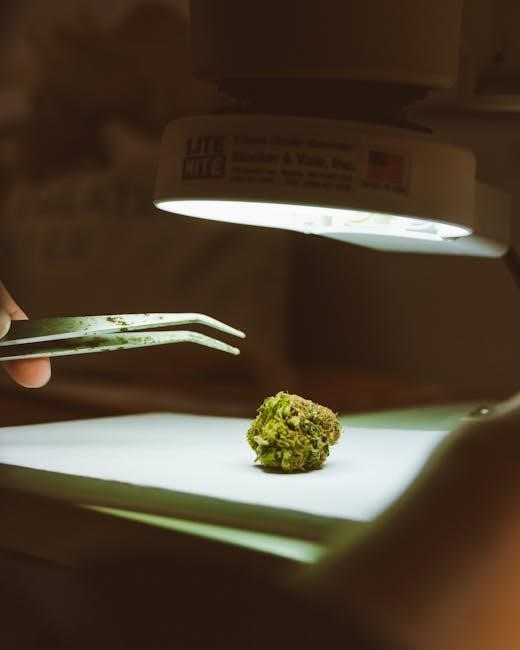
Understanding the compound light microscope’s parts and functions is fundamental for its effective use․ Proper handling and maintenance ensure optimal performance and longevity of the instrument․
8․1 Summary of Key Takeaways
The compound light microscope is an essential tool for observing microscopic specimens․ Key components include the eyepiece‚ objective lenses‚ stage‚ and light source‚ each serving distinct roles in magnification and illumination․ Proper adjustment of focus and lighting ensures clear visibility․ Regular maintenance‚ such as cleaning lenses and handling parts gently‚ prolongs the microscope’s efficiency․ Understanding these elements and their functions is crucial for effective use in educational and research settings․ This guide provides a comprehensive foundation for mastering the compound light microscope․